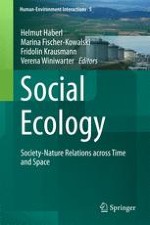2016 | OriginalPaper | Buchkapitel
9. More Than the Sum of Its Parts: Patterns in Global Material Flows
verfasst von : Andreas Mayer, Anke Schaffartzik, Fridolin Krausmann, Nina Eisenmenger
Erschienen in: Social Ecology
Aktivieren Sie unsere intelligente Suche, um passende Fachinhalte oder Patente zu finden.
Wählen Sie Textabschnitte aus um mit Künstlicher Intelligenz passenden Patente zu finden. powered by
Markieren Sie Textabschnitte, um KI-gestützt weitere passende Inhalte zu finden. powered by
